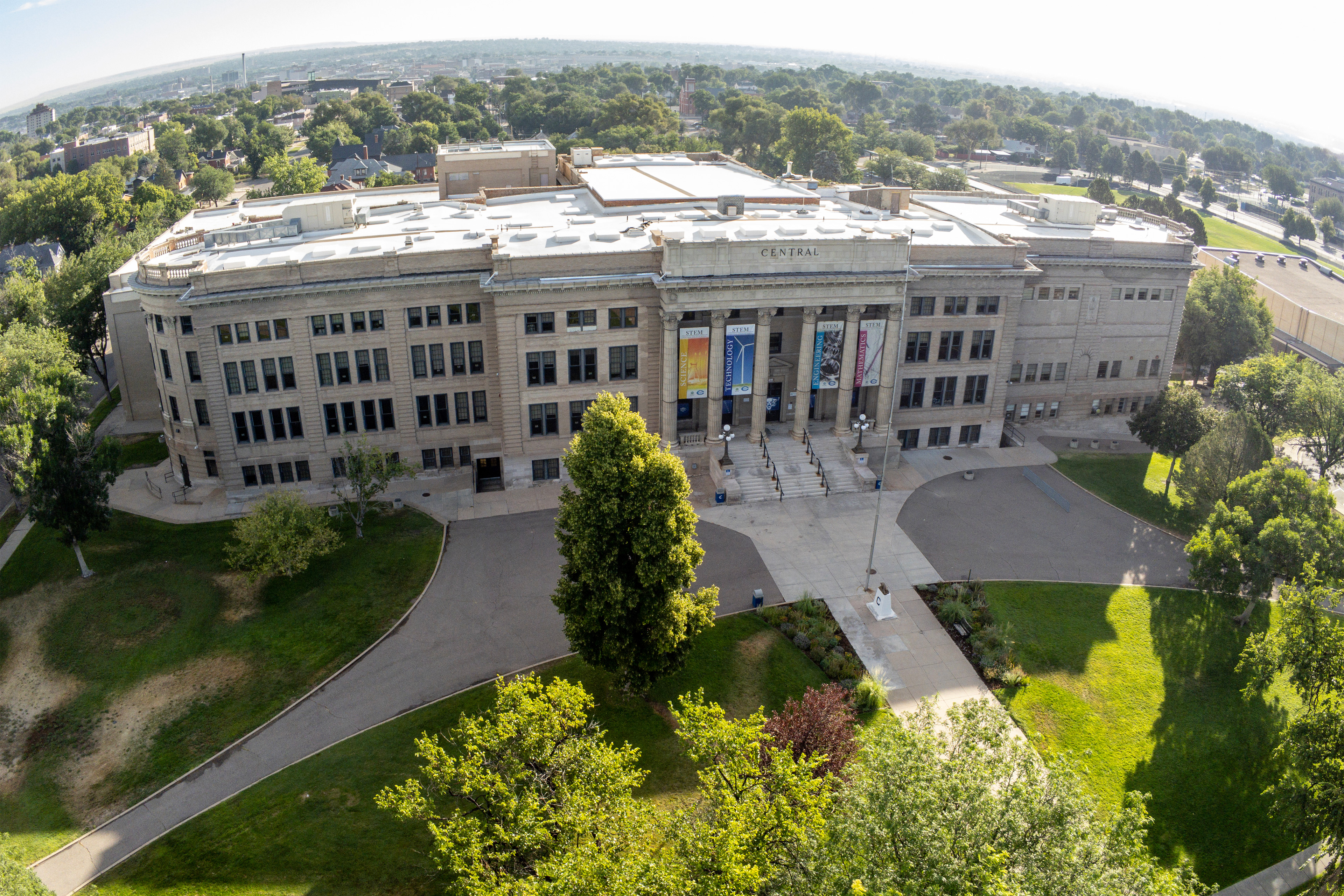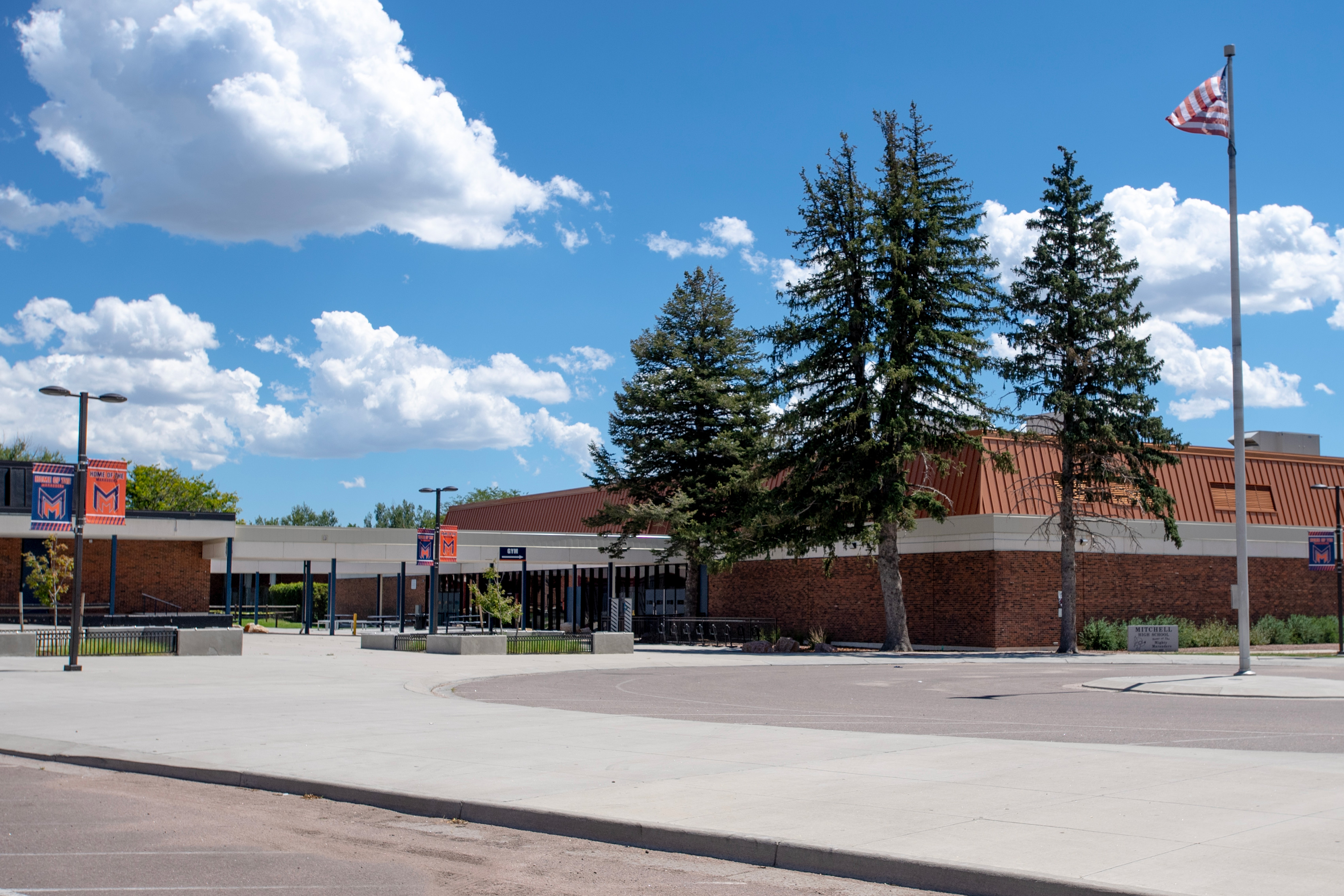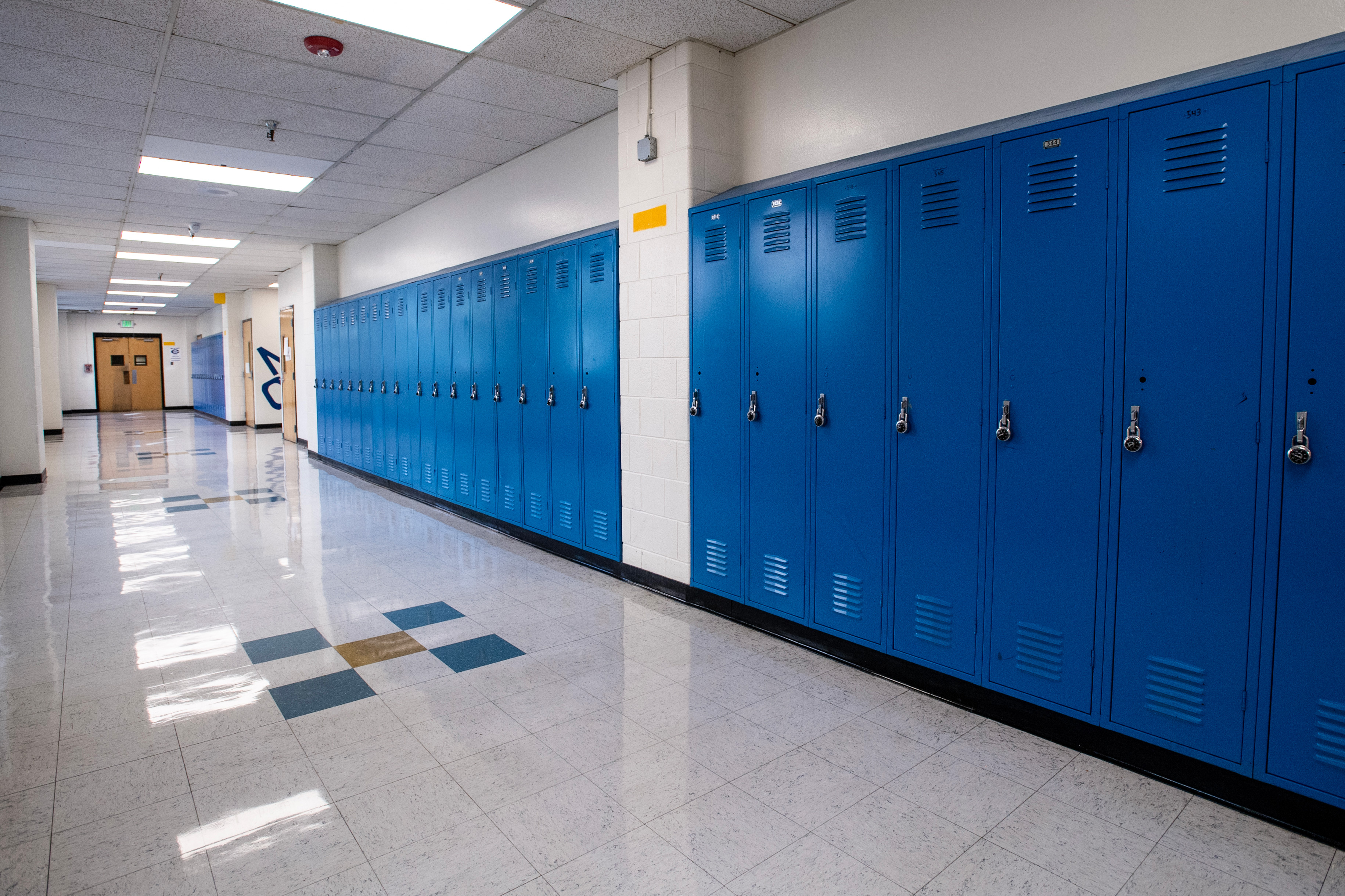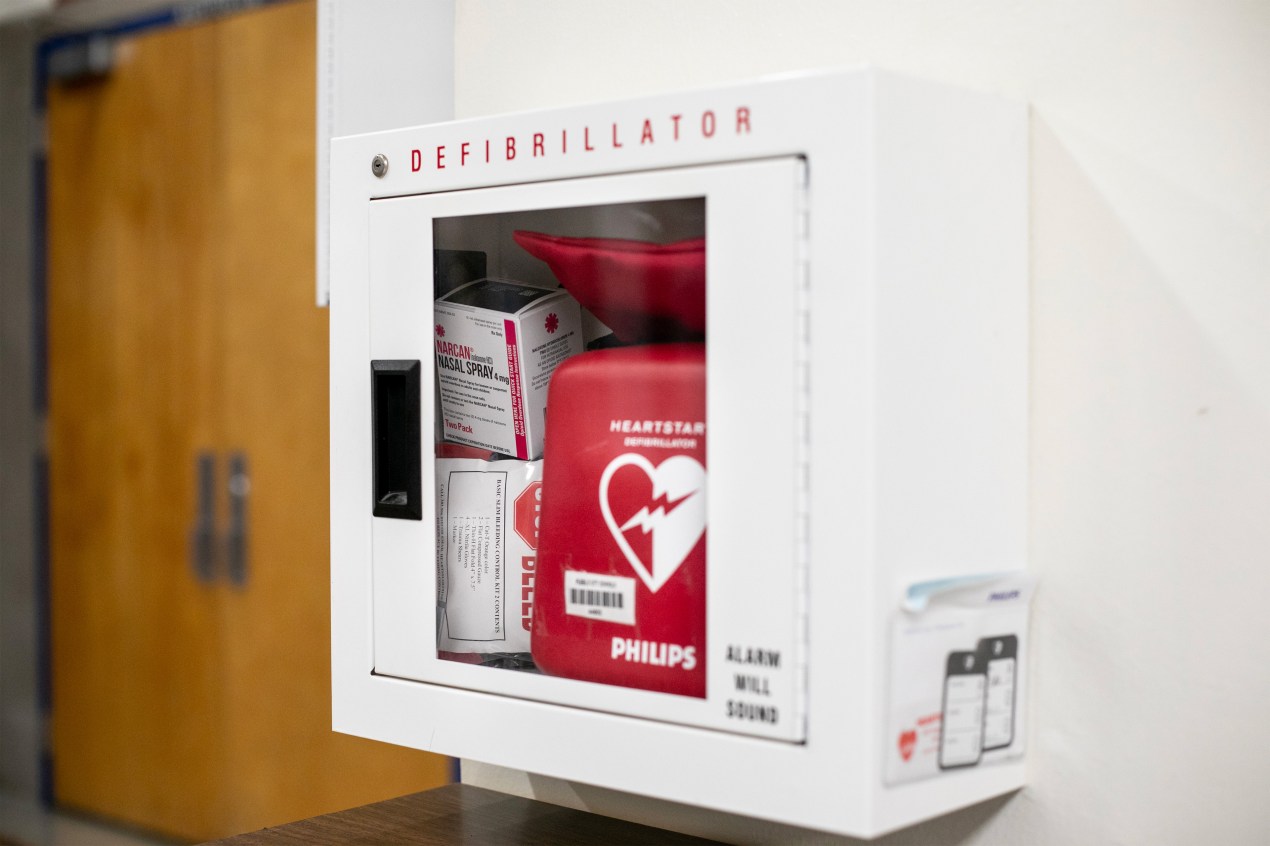Last year, a student fell unconscious after walking out of a bathroom at Central High School in Pueblo, Colorado. When Jessica Foster, the school district’s lead nurse, heard the girl’s distraught friends mention drugs, she knew she had to act fast.
Emergency responders were just four minutes away. “But still four minutes — if they are completely not breathing, it’s four minutes too long,” Foster said.
Foster said she got a dose of naloxone, a medication that can rapidly reverse an opioid overdose, and gave it to the student. The girl revived.
Forty-five miles away in Colorado Springs, Mitchell High School officials didn’t have naloxone on hand when a 15-year-old student overdosed in class in December 2021 after snorting a fentanyl-laced pill in a school bathroom. That student died.
Colorado Springs’ school district has since joined Pueblo and dozens of other districts in the state in supplying middle and high schools with the lifesaving medication, often known by one of its brand names, Narcan. Since passage of a 2019 state law, Colorado has had a program that allows schools to obtain the medicine, typically in nasal spray form, for free or at a reduced cost.
Not all schools are on board with the idea, though. Though more districts have signed on since last year, only about a third of Colorado districts had enrolled in the state’s giveaway program at the start of this school year. And within the dozen counties with the highest drug overdose death rates in the state, many school districts had not signed up in the face of ongoing stigma around the need for the overdose reversal medication.
The federal Substance Abuse and Mental Health Services Administration recommends that schools, including elementary schools, keep naloxone on hand as fatal opioid overdoses rise, particularly from the potent drug fentanyl. And 33 states have laws that expressly allow schools or school employees to carry, store, or administer naloxone, according to Jon Woodruff, managing attorney at the Legislative Analysis and Public Policy Association, which tracks naloxone policies across the country.
Among those, about nine states require at least some K-12 schools to store naloxone on-site, including Illinois, whose requirement goes into effect in January. Some states, such as Maine, also require that public schools offer training to students in how to administer naloxone in nasal spray form.
Rhode Island requires all K-12 schools, both public and private, to stock naloxone. Joseph Wendelken, a spokesperson for the Rhode Island Department of Health, said in the past four years naloxone was administered nine times to people ages 10 to 18 in educational settings.
In early September, the medication also became available over the counter nationally, though the $45 price tag per two-dose package has some addiction specialists worried it will be out of reach for those who need it most.
But the medicine still isn’t as publicly widespread as automated external defibrillators or fire extinguishers. Kate King, president of the National Association of School Nurses, said reluctance to stock it in schools can stem from officials being afraid to provide a medical service or the ongoing cost of resupplying the naloxone and training people to use it. But the main hang-up she’s heard is that schools are afraid they’ll be stigmatized as a “bad school” that has a drug problem or as a school that condones bad choices.
“School districts are very careful regarding their image,” said Yunuen Cisneros, community outreach and inclusion manager at the Public Education & Business Coalition, which serves most of the state’s school districts. “Many of them don't want to accept this program, because to accept it is to accept a drug addiction problem.”
That’s the wrong way to think about it, King said. “We really equate it to our stock albuterol for asthma attacks, our stock epinephrine for anaphylactic reactions,” she said.

Colorado health officials could not say how often naloxone had been used on school grounds in the state. So far this year, at least 15 children ages 10 to 18 have died of fentanyl overdoses but not necessarily in schools. And in 2022, 34 children in that age group died, according to the state Department of Public Health and Environment. That included 13-year-old José Hernández, who died in August 2022 from a fentanyl overdose at home just days after starting eighth grade at Aurora Hills Middle School. His grandmother found his body over the bathroom sink in the early morning.
With the arrival of this new school year, supplies of naloxone are on hand for kids in more Colorado schools. Last year, state lawmakers appropriated $19.7 million in federal aid to the Naloxone Bulk Purchase Fund, which is accessible to school districts, jails, first responders, and community service organizations, among others.
“It’s the most we’ve ever had,” said Andrés Guerrero, manager of the state health department’s overdose prevention program.
According to data provided by Colorado’s health department, 65 school districts were enrolled in the state program to receive naloxone at low or no cost at the start of the school year. Another 16 had reached out to the state for information but hadn’t finalized orders as of mid-August. The remaining 97 school districts either didn’t stock naloxone at their schools or sourced it from elsewhere.
Guerrero said the districts decide whom to train to administer the medicine. “In some cases, it's just the school nurses. In some cases, it's school nurses and the teachers,” he said. “And in some cases, we have the students as well.”
In Durango, the 2021 death of a high schooler galvanized students to push for the right to carry naloxone with them to school with parental permission — and to administer it if need be — without fear of punishment.
It took picketing outside a school board meeting to get permission, said Hays Stritikus, who graduated this spring from Durango High School. He’s now involved in drafting legislation that would expressly allow students across the state to carry and distribute Narcan on school grounds.
“The ultimate goal is a world where Narcan is not necessary,” he said. “But that's just not where we live.”
Some health experts disagree that all schools should stock naloxone. Lauren Cipriano, a health economist at Western University in Canada, has studied the cost-effectiveness of naloxone in secondary schools there. While opioid poisonings have occurred on school grounds, she said, high schools tend to be really low-risk settings.

More effective strategies for combating the opioid epidemic are needle exchange sites, supervised drug consumption sites, and medication-assisted treatment that reduces cravings or mutes highs, Cipriano said. But those approaches can be expensive compared with naloxone distribution.
“When the state makes a big, free program like this, it looks like they're doing something about the opioid epidemic,” she said. “It's cheap and it looks like you're doing something, and that's, like, political gold.”
Denver Public Schools, the largest school district in Colorado, started stocking naloxone in 2022, said Jade Williamson, manager of the district’s healthy schools program.
"We know some of the students are on the forefront of these things before older generations,” Williamson said. “To know where to find it, and to access it when needed through these adults who've trained, whether that's a school nurse or a school administrator, I think it brings them some sense of relief."
The state’s seven largest districts, with more than 25,000 students each, all participate in the state program. By contrast, a KFF Health News analysis found, only 21% of districts with up to 1,200 students have signed up for it — even though many of those small districts are in areas with drug overdose death rates higher than the state average.
Some school districts figured out a path to getting naloxone outside of the state program. That includes Pueblo School District 60, where lead nurse Foster gave naloxone to a student last year.
The Pueblo school district gets naloxone at no cost from a local nonprofit called the Southern Colorado Harm Reduction Association. Foster said she tried signing up for the state program but encountered difficulties. So she decided to stick with what was already working.

Moffat County School District RE-1 in Craig, Colorado, gets its naloxone from a local addiction treatment center, according to district nurse Myranda Lyons. She said she trains school staffers on how to administer it when she teaches them CPR.
Christopher deKay, superintendent of Ignacio School District 11Jt, said its school resource officers already carry naloxone but that the district enrolled in the state program, too, so that schools could stock the medication in the nursing office in case a resource officer isn’t around.
“It’s like everything — like training for fire safety. You don’t know what’s going to happen in your school,” said deKay. “If the unthinkable happens, we want to be able to respond in the best way possible.”
This story was produced with reporting assistance from El Comercio de Colorado.








